THE OTTOMAN EMPIRE
The Classical Age 13001600

Halil Inalcik


CONTENTS



LIST OF MAPS


Acknowledgement is due to the following for plates in this book: Library of the Topkap Palace, Istanbul, 411, 3439; sterreichische Nationalbibliothek, Vienna, 12, 1330, 32, 33, 4352; Museo Civico Correr, Venice, 31, 4042; Turkish Ministry of Tourism and Press, 5457; The Trustees of the National Gallery, London, 1; British Museum and R.B.Fleming and Co. Ltd., 2, 3; Editions Eugne de Boccard, Paris, 53.
Palace, Istanbul, 411, 3439; sterreichische Nationalbibliothek, Vienna, 12, 1330, 32, 33, 4352; Museo Civico Correr, Venice, 31, 4042; Turkish Ministry of Tourism and Press, 5457; The Trustees of the National Gallery, London, 1; British Museum and R.B.Fleming and Co. Ltd., 2, 3; Editions Eugne de Boccard, Paris, 53.


While this book is primarily intended as an introduction to the institutions and society of the Ottoman Empire for the general reader, it may also be of some use to the more specialised student. Its publication has unfortunately been delayed for nearly five years as a result of various factors and thus certain sections might bear some elaboration. Furthermore, given the linguistic problems involved in the preparation of such a work, it is unavoidable that the specialist may find some inconsistencies in the transliteration of names and terms.
I would like to express my gratitude to Professor Bernard Lewis who encouraged me in writing this book. Professor Norman Itzkowitz and Dr Colin Imber, moreover, kindly agreed to translate the book into English, which required not only linguistic competence in Turkish, but also considerable expertise in Ottoman studies. I am also indebted to Dr Colin Imber for preparing the glossary.
My thanks are due to Dr Metin And for letting me use the photographs from the albums in the Nationalbibliothek, Vienna, cod. 8626 and cod. 8615, and from those in the Museo Civico Correr, Venice. I am also grateful to Mrs Eva Halasi-Kun for her kind assistance in reading the old German captions in the Nationalbibliothek albums. I am further indebted to Mr Kemal  , director of the Topkap
, director of the Topkap Palace Museum, Mrs Filiz aman and Zeren Akalay for their help and suggestions in making selections from the miniatures in the museum library.
Palace Museum, Mrs Filiz aman and Zeren Akalay for their help and suggestions in making selections from the miniatures in the museum library.
Finally, it would have been impossible for me to write this book without the constant help and encouragement of my wife.
H.I.
Turkish words, regardless of their language of origin, place-names within the boundaries of modern Turkey, and the names of Ottoman Turks have been transcribed according to the official modern Turkish orthography. This presents few difficulties to a reader of English, but the following pronunciations should be noted:
c pronounced j as in John
pronounced ch as in church
a soft guttural, something like the gh in brougham
pronounced something like the o in atom
pronounced like the French eu, as in peu
pronounced like the sh in shell
pronounced like the French u, as in lune
A circumflex indicates a lengthened vowel
The anglicized forms are used for some well-known place-names (e.g. Suez, Cairo) and Turkish words (e.g. vizier, pasha).
In this book,  has been used to represent the letter (dotless i).
has been used to represent the letter (dotless i).
Italics: italics are used for foreign and technical terms included in the glossary. They are used only when a word is used for the first time.
At the time of its foundation at the turn of the fourteenth century, the Ottoman state was a small principality on the frontiers of the Islamic world, dedicated to Gaz, the holy war against infidel Christianity. This insignificant frontier state gradually conquered and absorbed the former Byzantine territories in Anatolia and the Balkans and, with the conquest of the Arab lands in 1517, became the most powerful state in the Islamic world.
By the reign of Sleymn I (152066), continued military success, in an area stretching from central Europe to the Indian Ocean, had given the Ottoman Empire the status of a world power; but in the long wars of the seventeenth century the balance turned in favour of Europe. Ottoman power declined, and with the recognition of western superiority in the eighteenth century the empire became politically and economically dependent on Europe. Finally, the continued existence and possible collapse of the empire became a problem of European politics, the Eastern Question. Ottoman political life continued until 1920 under European tutelage.
The structure and institutions of the empire changed with the differing circumstances of these periods. The changes in its internal structure and its political development show how, from being a frontier principality, it became, by the end of the sixteenth century, an empire in the traditions of the ancient near-eastern states, such as the Sassanid and, more especially, the Abbasid Empire. The Ottoman Empire of the late sixteenth century, with its traditions of statecraft and administration, financial policies, land system and military organization, was a most highly developed example of a near-eastern empire. During the period of decline, however, European military and economic superiority made the Ottomans themselves aware that the traditions of the near-eastern state had outlived their usefulness and that they were ill-suited to the new era.
From this time onwards Ottoman history is a record of the decayed forms of ancient imperial institutions; or, more correctly, the history of a near-eastern states efforts to adapt itself to the European economic, political and cultural challenge. It was only after 1924, and only after a radical revolution, that the Turks finally abandoned this concept of state.
Thus the 1590s mark the main dividing line in Ottoman history. This book describes the first period, stressing how the Ottomans adapted the institutions of the near-eastern state, and how these institutions began to disintegrate in the face of modern Europe.


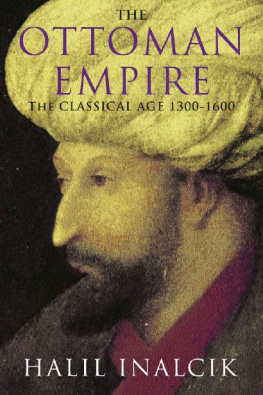
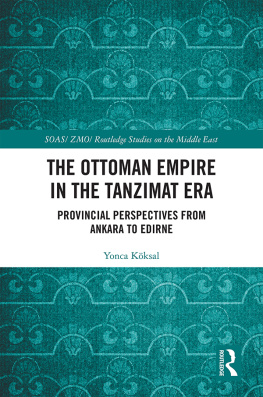

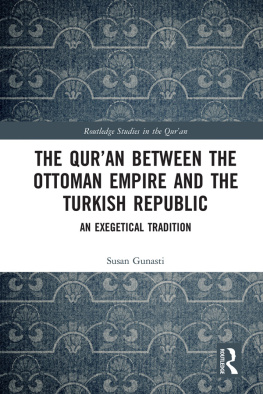
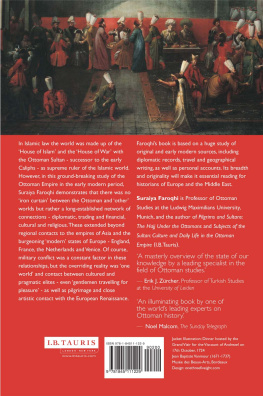

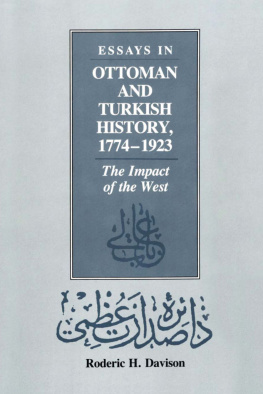




 Palace, Istanbul, 411, 3439; sterreichische Nationalbibliothek, Vienna, 12, 1330, 32, 33, 4352; Museo Civico Correr, Venice, 31, 4042; Turkish Ministry of Tourism and Press, 5457; The Trustees of the National Gallery, London, 1; British Museum and R.B.Fleming and Co. Ltd., 2, 3; Editions Eugne de Boccard, Paris, 53.
Palace, Istanbul, 411, 3439; sterreichische Nationalbibliothek, Vienna, 12, 1330, 32, 33, 4352; Museo Civico Correr, Venice, 31, 4042; Turkish Ministry of Tourism and Press, 5457; The Trustees of the National Gallery, London, 1; British Museum and R.B.Fleming and Co. Ltd., 2, 3; Editions Eugne de Boccard, Paris, 53.